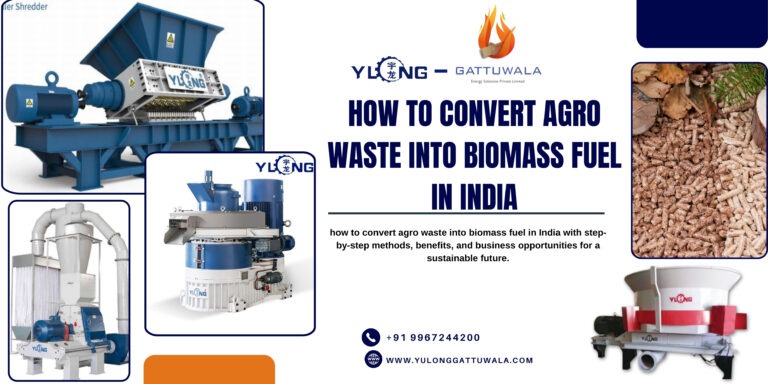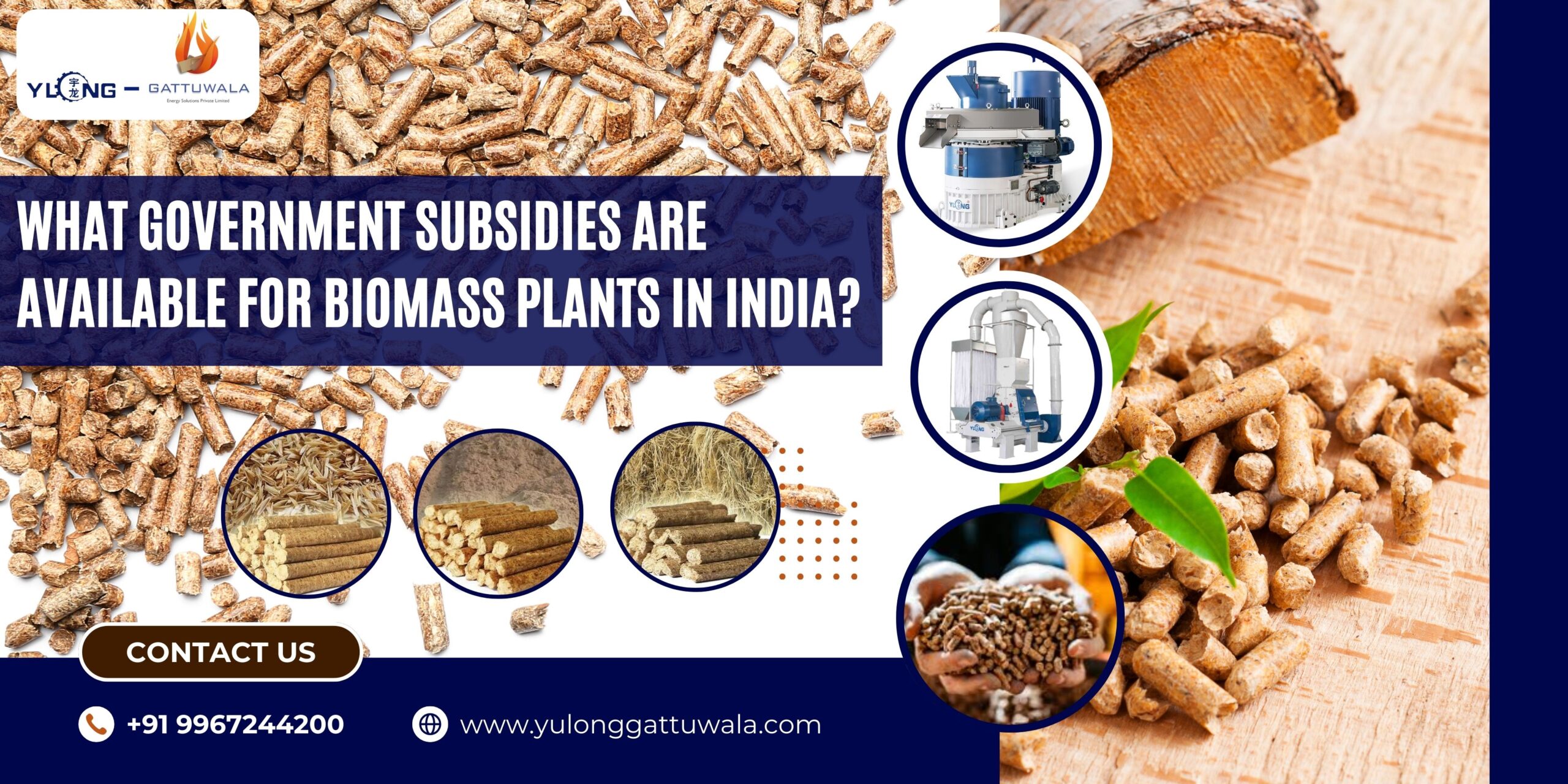- August 18, 2025

India is home to a massive agricultural economy, producing millions of tons of crop residues every year. Unfortunately, a significant portion of this agro-waste is either burned in fields (causing severe air pollution) or left unused. At the same time, the country remains heavily dependent on coal and fossil fuels to power industries and households.
To address both challenges, the Government of India has been aggressively promoting biomass energy—especially biomass pellet plants. These plants convert agricultural residues such as rice husk, wheat straw, sugarcane bagasse, and mustard husk into clean, renewable fuel.
However, setting up a biomass plant requires a heavy initial investment. This is where government subsidies and financial incentives play a key role. Through central and state-level schemes, entrepreneurs, industries, and farmer-producer groups can access support to establish pellet plants and biomass-based power projects.
In this blog, we’ll explore the key government subsidies available for biomass plants in India.
1. MNRE Support under the National Bio-Energy Mission
The Ministry of New and Renewable Energy (MNRE) is the nodal body promoting biomass energy. Under its National Bio-Energy Mission, several incentives are available:
Capital Subsidy for Biomass Power Plants – Depending on the technology and region, projects may receive financial support covering a percentage of the initial plant cost.
Subsidy for Gasifier-based Power Plants – Biomass gasifiers used in rural electrification and small industries are eligible for support.
Support for Cogeneration Plants – Industries like sugar mills, paper, and rice mills can set up cogeneration plants using biomass. Subsidies reduce their upfront burden.
This mission has a dual focus: reducing dependence on fossil fuels and creating a circular economy by reusing agro-waste.
2. Biomass Pellet Subsidies through Co-Firing Policy
In 2021, the government made it mandatory for coal-based power plants to co-fire biomass pellets along with coal. The policy requires 5–10% blending of biomass pellets in large thermal power plants.
This mandate created a strong demand for biomass pellets, and the government supports pellet manufacturers by:
- Assisting in setting up pellet production plants near coal-based power plants.
- Providing viability gap funding in certain states to make pellet pricing competitive.
- Offering logistical support for transporting biomass pellets from farmers to plants.
- Assisting in setting up pellet production plants near coal-based power plants.
This policy alone has opened up a huge market for entrepreneurs entering the pellet industry.
3. Subsidy on Biomass Collection & Processing Equipment
One of the biggest hurdles in biomass utilization is the collection of crop residues. To solve this, the government—through both central and state schemes—provides subsidies on machinery such as:
Balers and rakers for collecting paddy straw and wheat straw
Shredders and choppers for cutting crop residue into manageable sizes
Loaders and transport equipment
For example, under the Crop Residue Management (CRM) Scheme, farmers can receive up to 80% subsidy on these machines through custom hiring centers (CHCs). This ensures a steady supply of raw material for pellet plants.
4. State-Level Subsidies and Incentives
Several states are aggressively promoting biomass energy as part of their renewable energy policies. Examples include:
- Punjab & Haryana – Major focus on paddy straw-based pellets; subsidies for pellet plants and incentives for entrepreneurs to reduce stubble burning.
- Madhya Pradesh & Maharashtra – Land allocation at concessional rates in industrial parks; interest subsidies on loans for biomass projects.
Uttar Pradesh – Waiver of electricity duty, stamp duty benefits, and support for biomass-based power generation.
Each state offers unique policies depending on local raw material availability. Entrepreneurs should check with the State Nodal Agencies (SNAs) for exact schemes.
5. Carbon Credit and Renewable Energy Certificates (RECs)
Apart from direct subsidies, biomass plants are also eligible for carbon credits and Renewable Energy Certificates (RECs).
- A biomass plant helps reduce greenhouse gas emissions, allowing it to earn carbon credits which can be sold in domestic and international markets.
By generating renewable electricity, plants can also earn RECs, which provide additional revenue streams.
This makes biomass plants financially attractive in the long run.
6. Other Indirect Supports
- Priority Lending: Banks classify renewable energy projects, including biomass plants, under priority sector lending, making credit access easier.
- GST Benefits: Biomass pellets attract lower GST (5%) compared to coal (28%), encouraging industries to switch.
Employment Generation Support: State governments provide incentives for projects that create rural jobs through biomass collection and pellet production.
🌍 Conclusion: A Bright Future with Government Support
The Indian government’s strong policy push for biomass energy is not just an environmental initiative—it’s also an economic opportunity. With capital subsidies, equipment support, state-level incentives, and mandatory pellet usage, the sector is witnessing rapid growth.
For entrepreneurs, industries, and farmer-producer groups, this is the right time to invest in biomass pellet plants. Not only do they reduce pollution and carbon emissions, but they also create extra income for farmers, generate rural employment, and support India’s clean energy transition.
Biomass is no longer a by-product—it’s the future of energy. And the government is ensuring that future arrives faster.
📞 Interested in setting up a biomass pellet plant in India? Contact Gattuwala Energy for expert consultation, equipment, and government subsidy support.


How to Convert Agro Waste into Biomass Fuel in India



Sudhir Satapathy
November 21, 2025Machinery full equipment cost